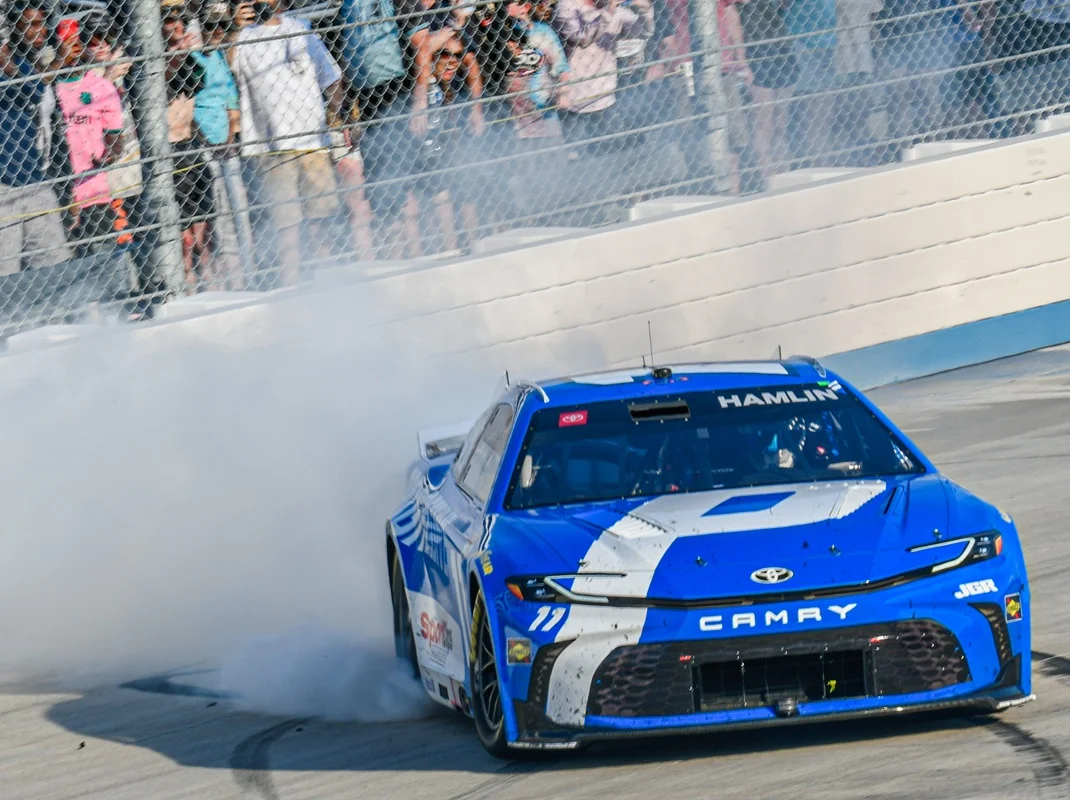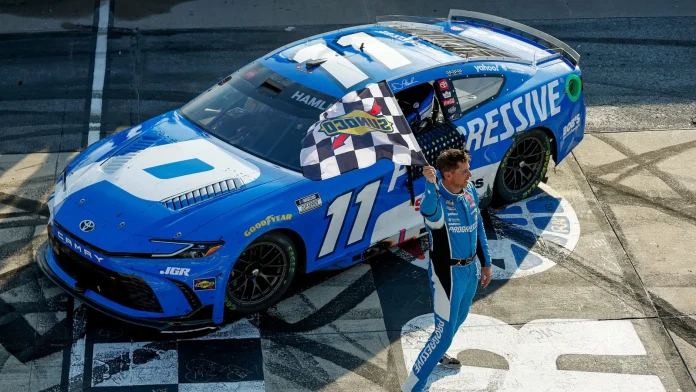Denny Hamlin’s Dover overtime restart strategy was put to the test as he led the field late at Dover International Speedway, facing wet track conditions and aggressive contenders eager for the win. Navigating critical decisions and relying on key advice, Hamlin managed to edge out Christopher Bell and secure his fourth victory of the NASCAR season.
Decisions Shaped by Track and Tire Conditions
Hamlin entered the overtime restart mindful of several variables affecting his chances. The recent rain meant that some sections of the racetrack still held moisture, creating dangerous spots that he needed to avoid. With several rivals on fresher tires and a pack of drivers likely to gamble at the back, Hamlin was calculating how to hold off challenges in these crucial final laps.
“Yeah, I’m considering all the factors, right?”
—Denny Hamlin, Driver
Hamlin stated his intent to stay out for the restart, aware that multiple cars would likely buffer him from the rest of the field. He felt confident he could defend his position for a single restart, especially with the track relatively clean following the rainfall, but admitted new-tire competitors posed a real threat if the race extended beyond the initial green flag lap.
“So I felt confident in holding it off for one time. But not multiple, especially when new tires was making some major hay there with the 19 and a few others.”
—Denny Hamlin, Driver
Strategic Choices at the Overtime Restart
Discussing his race decisions on the Actions Detrimental podcast, Hamlin detailed the options available to a driver when lining up for a restart. Choosing the outside line, Hamlin recognized there were specific moments—at the initial launch or coming out of Turn 2—where he needed to establish a clear lead. If not, the inside line muscle could create trouble by pushing his car up the track and into less grippy areas.

“So there’s two places. You have two instances where if you are starting on the outside, you either better clear initially, that’s your initial jump, or you need to be clear off of Turn 2,”
—Denny Hamlin, Driver
“If you’re not clear off either one of those two, you’ve lost all leverage because the inside car, as we’ve seen, can push you up the racetrack, put you in the fuzz, next thing you know you’re in trouble. Lucky for me I had two teammates that somewhat held their line, so I was fortunate in that instance.”
—Denny Hamlin, Driver
Having teammates who maintained their lines made a significant difference for Hamlin, providing some consistency through the risky restart sequence against drivers like Christopher Bell and others intent on capitalizing on any mistake.
Intense Racing and Avoiding Disaster on the Final Lap
As the green flag waved, Hamlin managed a strong start, but the situation quickly became tense. Both Hamlin and Bell made contact, with visible smoke off their cars, caused partly by Hamlin’s attempt to dodge a treacherous water spot left on the track from earlier rain. The margin for error was razor-thin as both drivers raced closely, battling for every inch.
“Now we made contact with all of them. I think I saw smoke off me and the 20 when we took off,”
—Denny Hamlin, Driver
Hamlin explained that he purposely angled his car to avoid the wet area, which forced him down the track and created further contact with Bell. This aggressive maneuvering was necessary to preserve his momentum and keep from losing grip, a critical factor as Bell sought to overtake him.
“Then 4 obviously he’s coming up the track, I see him, I can feel him. Like I can feel the air in the car, like the pressure inside, so I know he’s getting closer and closer to me. And at that point I’m like, ‘Please, just don’t run into me. Don’t clean us out here.’ And I think that what caused C-Bell to spin was he was trying to keep it off of us. Doing the right thing.”
—Denny Hamlin, Driver
The close-quarters racing pushed Bell to his limits, and, according to Hamlin, Bell ultimately spun while trying to avoid a collision. Hamlin attributed this outcome to Bell’s attempt to “do the right thing” and keep the cars clear, which inadvertently handed Hamlin an uncontested path to the finish line.
Victory’s Impact and Looking Forward
Hamlin’s calculated use of the Dover overtime restart strategy, paired with situational awareness and quick judgment under pressure, played a crucial role in his latest win. The events at Dover showcased both the fine margins that define late-race NASCAR battles and the ability of experienced drivers like Hamlin to manage split-second decisions that can seal victory or spell costly mistakes.
With this triumph, Hamlin further cements his status at the front of the series, while the dramatic finish provides valuable lessons for competitors such as Christopher Bell and other drivers preparing for similarly challenging situations on unpredictable tracks in upcoming races.
Our Reader’s Queries
Q. How did Denny Hamlin get so rich?
A. Denny Hamlin started racing full-time in the Cup Series in 2006 with Joe Gibbs Racing. Since then, he has achieved a remarkable career with 51 Cup Series wins. Hamlin has also won the Daytona 500 three times, in 2016, 2019, and 2020, and earned substantial prize money during his career.
Q. How is Denny Hamlin so rich?
A. Denny Hamlin’s $65 million net worth is built on over $100 million earned from NASCAR contracts and race victories. He also has high-value endorsements from companies like FedEx, Jordan Brand, and Toyota. Additionally, he is a co-owner of 23XI Racing, a team now worth more than $100 million.


